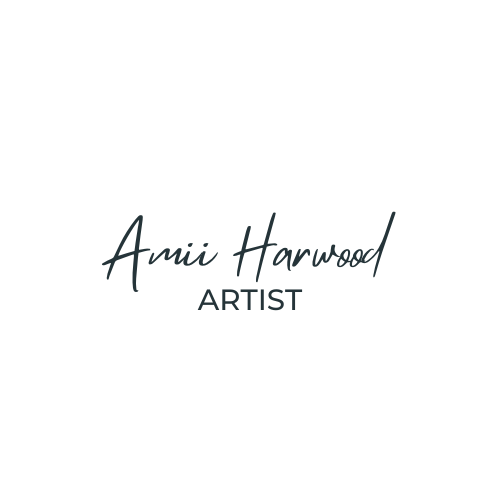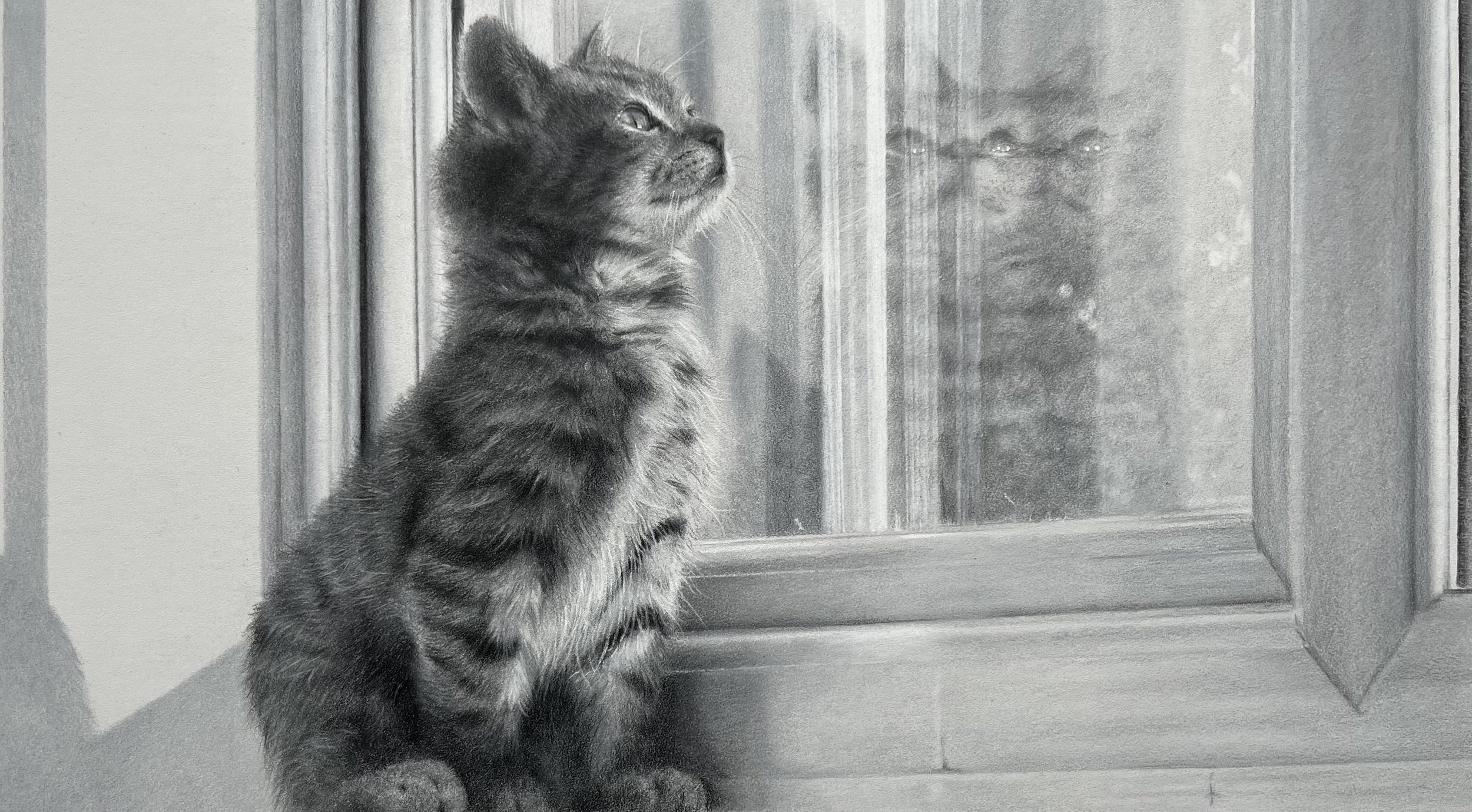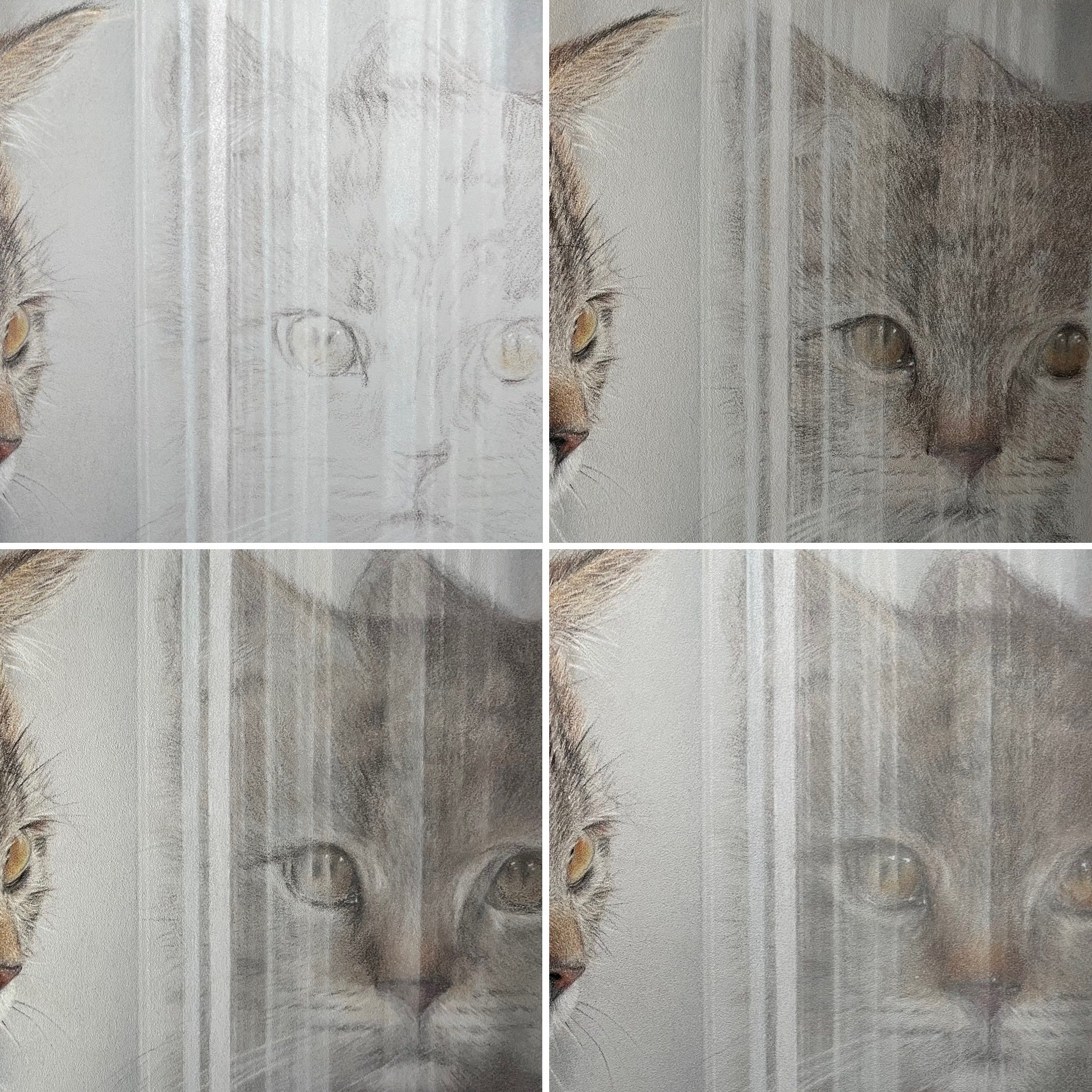Replicating Reflections
A version of the following was published in Colored Pencil Magazine (November 2023)
Newly married, my husband and I excitedly welcomed two kittens into our home. We quickly realised, however, that they were unwell and so began an exhausting, and fortunately successful, journey to nurse them back to health.
“I wonder…” coloured pencils on Pastelmat surface (13 by 10 inches). Amii Harwood
As busy new cat parents, we also took lots of photos. We were capturing their youth (perhaps somewhat nervously) and exploring photography with our first ‘grown up’ camera. Nearly ten years later our kittens are now healthy cats (albeit prescribed what seems like the most expensive cat food imaginable). When I recently took up drawing, I searched our photo archives for inspiration. What struck me is the sadness reflected back in some of the kitten photos; theirs, ours, or my later projection of a human emotion, I’m not sure. I’ve tried to capture some of that feeling in my artwork.
Reflections can evoke wonder in a composition. The imperfect mirroring can entice the audience to question and to be drawn deeper into the artwork as they try to reconcile differences between the object and reflection. For the artist, they may welcome the opportunity to reveal multiple sides to a subject (physically and emotionally) and, more broadly, realism artists can be challenged to adhere to the wisdom of ‘draw what you see’. Replication of objects on a transparent surface, such as glass, can also provide a joyous mix of subjects both reflections from ‘inside’ and ‘outside’.
“Monty in the winter sun” Coloured pencils on Pastelmat surface (13 by 7.5 inches). Amii Harwood
I would recommend always starting with the main subject in a reflective piece. This will allow you to get to know the familiar object and get comfortable with your palette. Proceed with the reflection by drawing what you see. Take breaks frequently and compare your work to the reference image. Moreover, compare the reflection to the subject. If the reflection is in a flat surface, such as a window or mirror, there should be little distortion and you should be able to imagine some lines of symmetry. For example, do the eyes align? Are multiple reflections in parallel? On a curve surface, you can try and imagine the object stretched with a similar curvature.
Work in progress shots showing the development of the reflections
If you need to adjust your reflection, view this as a positive. You won’t be able to erase a mistake entirely. You’ll leave an imprint in the paper and this will add to the story and intrigue. I’m very fond of a Clairefontaine Pastelmat surface as this retains some of the waxier pigments even after using a kneadable eraser. Further layers can then be added, and the eraser can be used again to reveal an underpainting.
Like many new techniques, confidence will come from trying, learning and developing.
“Stuck inside” - coloured pencils on Pastelmat (11 by 6 inches). Amii Harwood




